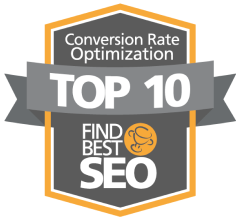Guest: Mark Baker | Head of Marketing Operations, EMEA & APAC| Former Oracle
Measuring KPIs – the aspects of examining performance can be quite the beast to tackle. How do we know we’re using the right metrics to capture the whole picture? Mark Baker, a 17-year marketing veteran, share his approach to selecting meaningful KPIs that focus on long-term success and team unification behind shared goals.
Transcripts
[Laura] (00:00): Welcome back to the podcast. Today, we have Mark Baker here to talk with us about one of my favorite topics, marketing KPIs. Mark has spent his entire career in enterprise software. Based in London, he’s worked for Oracle for the past 17 years in a range of marketing and sales roles, but most recently as Head of Marketing Strategy and Operations across EMEA and APAC. Mark describes himself as a numbers marketer who leaves the colors and fonts to others. Hi, Mark.
[Mark] (00:28): Hey. How are you doing?
[Laura] (00:28): I’m good. I’m good. Glad to have you with us today. KPIs is such an important topic that I think a lot of people struggle with in some ways.
[Mark] (00:38): It’s really tough.
[Laura] (00:39): Yes. Maybe you can start out and tell us a little bit about how they’ve changed with the evolution of marketing processes over time.
[Mark] (00:47): Well, I think there are probably a couple of key changes. One, I’m seeing great conversations happening in businesses around how to make sure that the KPIs you use are real and not vanity. A lot of people tend to use activities, “Oh, I had so many people at my event,” or, “I had so many people click on my website,” but if they’re the wrong people and the wrong activity, it’s not going to get you anywhere and so making sure that you’ve got real versus vanity metrics.
I think trends, looking at trends and we’re moving away from people putting a single number up and saying, “Hey, isn’t that great?” It’s like, well yeah, but is that good or is that bad or is that better or is that worse? You need to see how things change over time. Really looking at, back to think about the vanity metrics again, outcomes, things that are relevant to executives, to sales. We do tend to focus, marketeers, on marketing because we’re very excited and passionate about it, but you’ve got to put yourself in the shoes of salespeople.
I think all of that supports a really important conversation around the fact that resources into marketing gives outcomes from marketing and so by being real, by being very specific, you can be predictive and help businesses to understand that the investment they make in marketing is going to get them an outcome.
[Laura] (02:24): Sure. That makes a lot of sense. In Demand Generation, obviously we choose sales qualified leads as the ultimate KPI. That’s what we’re after. What about other KPIs that are helpful to give us a more well-rounded picture of what else is going on?
[Mark] (02:40): I love a sales qualified lead, but actually what I really love more is revenue.
[Laura] (02:45): Oh well, yes.
[Mark] (02:47): I think there is also a movement with all of that to helping look at what some people refer to as the total return on marketing investment, the ROMI, and actually looking at it, not just as that handoff point, but actually having marketing take an interest and a level of responsibility for the actual outcome. Of course, if a sales person chooses not to pick up that lovely qualified lead, they qualify it and say, “That’s a great lead,” and then they never work on it. There’s little we can do in marketing to make that deliver that outcome. But I think the, by looking at all the way to the end and looking at the revenue, I think that’s really, really important for marketing these days.
[Laura] (03:31): What would you say to that traditional friction between marketing and sales where once it goes to sales, marketing says, “We have no control,” and then sales says, “Marketing isn’t giving us the leads that we want.” How would you address that friction in your KPIs?
[Mark] (03:47): Well, I think you do look at that middle point, which is the sales qualified leads, but you also continue looking at, by partnering with sales, by partnering with sales operations, you look at what level of activity there is against the opportunities that marketing passes. You look at the win rates of marketing-created opportunities and doing a compare between what sales is doing for their own. You can really very often find that marketing opportunities, because they’ve been nurtured and warmed up and we’ve built a relationship with them already, actually close faster, close more often with a better outcome. Again, by looking at that entire end-to-end process, you can start to build a better partnership that’s based on ultimately the same goals, which is building revenue.
[Laura] (04:44): Right. Personally, we’ve had a lot of discussions on this podcast recently about that teamwork and it’s being so critical. So I think the more those silos break down, the more, particularly as people start implementing ABM, that it begins to work a bit smoother, as you say, towards the revenue goal.
[Mark] (05:03): Regardless of the tactic, you can have great alignment with very big segments. You don’t have to get down to the account level. That’s a very natural push/pull when you’re talking about a specific large account plan. But if you’ve got goals for a segment and can work closely together and make sure you’re using all your data to ensure that your marketing and your sales efforts are well aligned. I’ve seen loads of situations where you draw the Venn diagram and marketing’s marketing over here and sales is operating over here and we’re only getting that very small bit of intersection between the two and so we’re wasting energy on both sides. It’s, again, that alignment is so important from top down.
[Laura] (05:49): I agree. I agree. What sorts of KPIs do you find most helpful in a brand awareness campaign?
[Mark] (05:56): When you’re doing brand awareness, in my view, the only thing that really matters is what the customer is and what the prospects are telling you. Original research is everything. When I started in this game, the only way to do original research was to hire a firm with a bank of phone callers, spend three months phone calling enough people to get the responses you needed and then spend two months with somebody, with some data scientists working the Excel spreadsheets to get stuff, at which point, your original data is six months at a date and you don’t really know where you are.
[Laura] (06:29): Right.
[Mark] (06:30): These days, there’s so many great online research houses who are using the same sorts of test groups that the calling agencies are doing. But if you want to understand what’s happening with your brand, taking that temperature on a regular basis is the only way and you can do it relatively inexpensively these days and do it on a really regular cadence. If you can do a monthly cadence for your key markets and just ask 250 people, that’s all it takes. Stats are wonderful. Ask 250 people, “Do they know you? Do they know what you do? Would they buy from you if they did?” You can build a very clear brand health view, which is just absolute magic if you’re investing in pure brand work.
[Laura] (07:26): No, that’s a good suggestion for sure. It’s hard to talk about KPIs without delving a little bit into attribution. With so many channels, so many touch points, accurate attribution can be this hugely complicated challenge, so what kinds of models have you found helpful?
[Mark] (07:44): Well, I can tell you the model I found least helpful-
[Laura] (07:45): That helps too.
[Mark] (07:46): … and that’s last-touch. Last-touch is the worst thing you can do to a marketing organization. If you want your marketers to be fighting, it’s like those old 1950s, 1960s comedies where there’s a handbag sale and everyone dives into the handbags trying to grab them and everyone’s in there trying to make sure that their activity is the thing that tips the customer over into a lead. I have seen so much bad behavior at many companies in talking to all my CMO colleagues in various businesses, it’s really poisonous. Last-touch is absolutely poisonous.
What you need to do to get past that is to move to a more multi-touch attribution model, where you can give, because if an opportunity comes across the line, maybe it was an event, which was the last thing they did before turning, flowing as a lead, getting past the score, turning into an opportunity, but chances are, and typically most of us is still using contact-based lead flow systems rather than account-based lead flow system these days. What about the interactions you had with other people at that account? Maybe you talked to the HR person and the IT person, but not the finance person, but they’re the one who flowed because of the things they heard from the other people.
So you really need to have some great data and really drill into the data to understand and allow people to take credit for the great work that they’re doing and not just before that lead flows, after as well. Marketing has such an opportunity to impact the quality of the engagement and the sale by going after lead flow broader in the account. Get more people interested, get more people educated so that while the sales person is working the account, they’re there too and you can really get some fascinating information there around, again, marketing close rates, marketing speed. There’s a lot of great data there and I think last-touch attribution, while the easiest, it’s definitely the easiest, is the least helpful.
[Laura] (10:12): That’s an excellent point. I can definitely see how that would be the case. What about any anomalies you’ve found with traditional KPIs not actually tracking with marketing successes?
[Mark] (10:26): Well, again, I think there’s so many different things that happen in a marketing funnel and you can end up, you can be looking at just the web traffic and say, “Wow, what great web traffic. It’s up 50% year-on-year,” but that may be good because maybe we’ve actually decreased the amount of spend driving people to the website and that’s all organic, which is all good. But maybe at the same time, we’re actually attracting the wrong people. Perhaps they’re all people looking for some other company and they come to our website because it’s a similar name and they’re not progressing anywhere. Those are the sorts of things you can see. You can end up with great web traffic that leads to nowhere, great form fills which lead to nowhere, even great lead volumes, qualified lead volumes which ultimately deliver no revenue because just because we’re marketing to the wrong people. We’re hitting the wrong seniority, the wrong job role, the wrong segment in the market, and people are interested but can’t afford it. There’s lots of different reasons why those leading indicators can be false.
It goes the other way too. You can actually see over time and if you, perhaps if you installed a new scoring model for your leads, maybe it’s actually a better scoring model and so it’s actually flowing fewer leads, but you’re getting much higher conversion rates, much better close rates. You need to have a look at all of those things and really understand your entire funnel and what good looks like in a funnel and then be constantly tweaking all those different points. Otherwise, you will find yourself thinking you’re heading in one direction and finding you’ve landed in somewhere completely different.
[Laura] (12:21): I think that ties in really well to your very first point in this conversation, it’s more about the revenue than it is about any of these other factors.
[Mark] (12:28): It is. I’d never go throw away my leading indicators.
[Laura] (12:33): Sure.
[Mark] (12:33): I want all my leading indicators. I’ve been working on a KPI model at the moment and the outcome metrics are very, very clear for marketing. They’re just a few of them and that’s a really interesting thing. The outcome metrics, whether it’s the pipe, it’s the revenue, it’s the brand, those are the outcomes and that’s what really matters. But the list of activity metrics we have by tactical area for social, for digital, for the web, for customer marketing, for events, lots and lots and lots, and they’re really, really important. So, you need those as well and you need, because the teams need those to understand how their teams are functioning. The marketing leadership needs all that.
[Mark] (13:22): But the another area that I think is left out is the readiness metrics. Where is the budget? Do we have the enough people? Do we have the right people? Is the budget/people ratio right, team by team, or do we have some teams that have too much budget and some teams that don’t have enough? There’s a lot of work that can be done there in terms of staffing and skills and budget alignment that I think a lot of marketing teams miss out. I’ve done a lot of work at that end making sure that we’ve got the right people, the right amount of budget and the right platforms in place to make the marketing team successful. And if you’re not reporting on it, you probably don’t know.
[Laura] (14:09): For sure. Well in thinking about all of these things, maybe top five tips to better evaluate marketing initiatives that you can leave our audience with.
[Mark] (14:20): I think, like I’m saying, start with be aware of what metrics you need to make sure you’re successful and split them into the things that make sure that you’re ready, the things that make sure that the activity is running the way you think it is, and then that the outcome is what you think it should be. Those those are being on top of that, having a model, whatever’s right for your business is good, but there’s lots of great examples out there.
[Mark] (14:47): My second one, be very selective with the metrics you’re using with your stakeholders, with the C-levels, with your heads of sales, be very, very selective. Do not swamp them with all the things that matter to you, but which probably don’t matter to them. I have seen salespeople say, “Wait a minute, how come my SEO rank isn’t high enough for this product?” But that’s a rarity. Talk to them about the pipeline you’re delivering. Talk to them about the wins they’re getting, be across their metrics.
[Mark] (15:24): I think going back to what I said at the beginning, number three is make sure that you’re linking, when you’re talking to your execs and your salespeople, that the outcomes are linked to the inputs. That without people, without money to spend and platforms to do the work, you’re not going to get the outcomes. I have, not recently, been in businesses where people seem to keep on wanting to cut the budget and expect better, better returns. “We’ll just take him 10% of the headcount and 20% of the spend and can you do 50% more pipe for us?” It’s like “No, it doesn’t work that way.” If only. If only. But make sure you make that link in people’s minds and continue to drive it and show as much as you can the ratios, because there are lots of good ratio models for investment to outcome and if you can use those, you can make a good case.
Again, back to what I said up front, don’t use a single number to make an impression. Show a trend, show how it’s different from last week, last quarter, last year, as you’re continuing to invest. Then, again, be in that position to look at all those inputs and all those trends and all the rest of that to predict, actually, because that’s going to help you set targets. That’s going to help you set expectations, which is a terrible challenge for most marketeers is setting expectations, realistic expectations. Again, that’s going to help you, back to your relationships with the executive, your relationships with the sales team, and help marketing be the great success it should be.
[Laura] (17:13): Absolutely. We, as an agency, I talk to clients all the time and they want to know what to expect, right? That’s one of the things that I try to drive home to them so often is, well, your comparison is you. What matters is what happens over time, what did you do last year versus what you’re going to do today? It’s not really helpful to compare yourself to anyone else really, because their metrics are not relevant to yours.
[Mark] (17:38): Exactly.
[Laura] (17:38): They don’t mean the same things for their business. They don’t mean the same things for their team.
[Mark] (17:42): Targets will be different. The metrics may be the same, but the targeting will be different and the expectations will be different and you will invest differently in terms of both your people and your money, depending on, as you said, whether we’re looking at doing brand, whether we’re driving demand generation, whether we’re enabling our sales people or serving our customers. Yet, they all require different levels of investment, different KPIs, and will deliver different outcomes.
[Laura] (18:11): Absolutely. Well, thank you so much for your time today, Mark.
[Mark] (18:14): My pleasure.
[Laura] (18:16): I really appreciate it. Hopefully you’ll come back and see us again at some point.
[Mark] (18:18): Thanks so much, Laura. It’s been a pleasure.
[Laura] (18:20): All right. Thank you very much.
[Mark] (18:24): Cheers.














